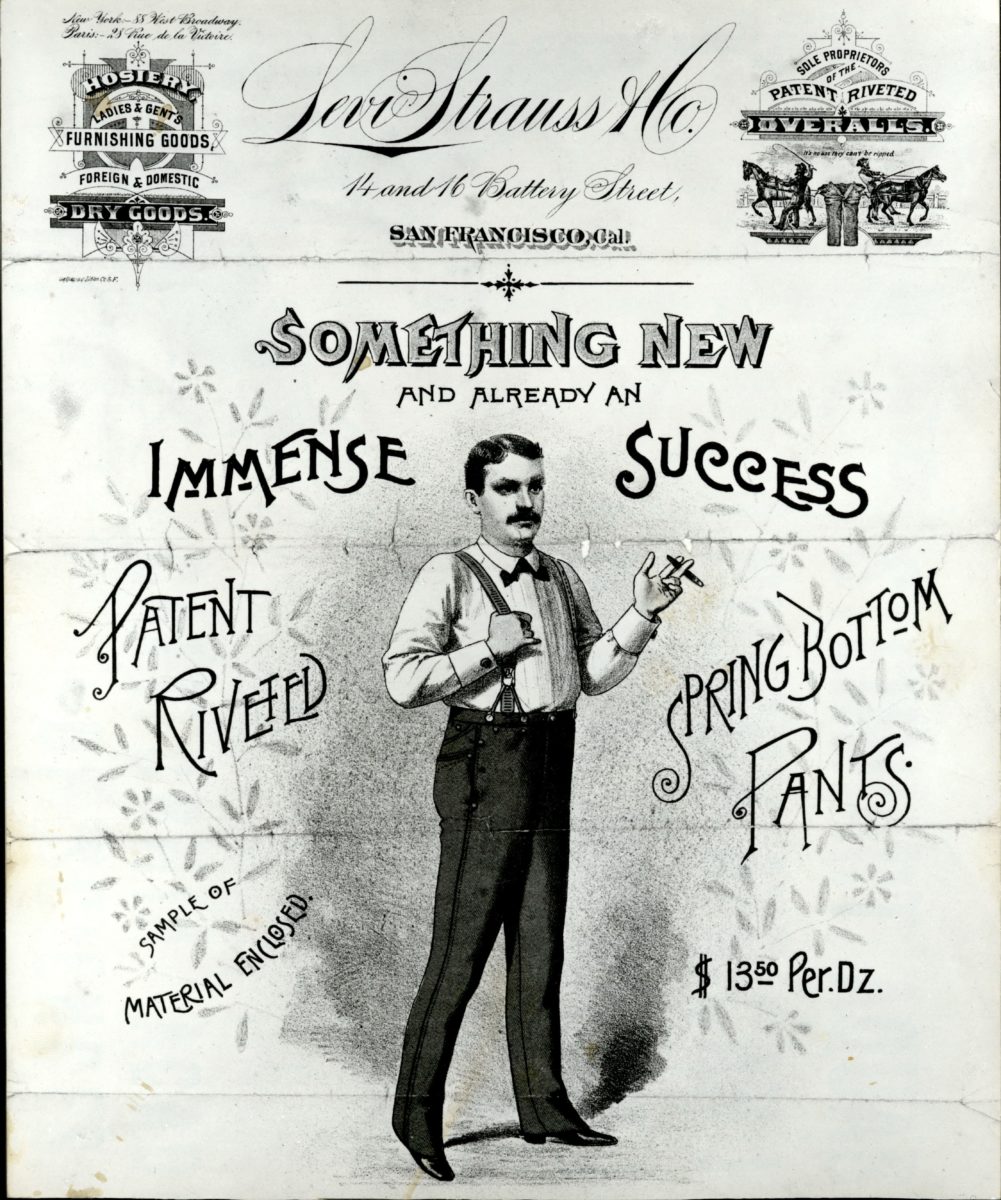As noted in “Levi Strauss: A History of American Style” comes to CJM Soon, we promised an interview with co-curator Heidi Rabben.
Cultural Currents: How did you work with archivists Tracey Panek and Laura O’Hara to put a show like this together? Can you describe the collaboration?
Heidi Rabben: My co-curator, Justin Limoges, and I were generously granted access to the archives to firstly research the contents, and through that, determine what kind of story we could tell. It became clear very quickly how selective we would need to be due to the wealth and diversity of objects in the archives, but a clear story started to emerge through the materials we found. This story would trace both the life and legacy of Strauss the man, alongside the legacy of his namesake, Levi’s® blue jeans—both legacies being of core importance to our mission here at The Contemporary Jewish Museum to support Culture, History, Art, and Ideas. Once we had a framework and some objects in mind, we worked very collaboratively with Tracey Panek and Laura O’Hara in the archives to find the best items to help illustrate Strauss’ life, from his Jewish roots in Buttenheim, Bavaria, to his patent with Jacob Davis for the first copper riveted workpants, to his death in San Francisco; and in parallel, to trace the evolution of the blue jeans, from their origin as durable workwear for miners, lumberjacks, and other blue collar workers, to the uniform of the American Cowboy, to an enduring symbol of contemporary pop and counter culture. We were also incredibly fortunate to work with Curatorial Advisor Dani Killam to locate a few key garments from outside the archives to crystallize the pervasive influence Levi’s continues to have today, particularly with celebrities and cultural icons.
CC:What surprises emerged as you researched this project?
Rabben: This project has been a revelation from the very beginning all the way through to the present. As someone who has lived in San Francisco for 12 years, I completely took for granted that THE quintessential American garment, worn by at least 50% of the global population on any given day, was born here in this city. It was such a treat to be able to do a deep dive into the history of that garment and the history of the man who launched it into mass production. Perhaps the biggest surprise of all is the most obvious thing: that Levi’s original 501 jeans have barely changed since the first pair was patented in 1873. For anything to survive nearly 150 years essentially unaltered and still be as relevant as ever is a truly singular feat.
CC: What makes this exhibition unique to San Francisco?
Rabben: San Francisco has undergone a lot of rapid change in the past 20 years, but this show is an illuminating reminder that San Francisco has always been a place for outcasts and innovators. From the Gold Rush to the Earthquake and fires of 1906 to the Summer of Love to the AIDS crisis, to the dotcom boom and bust, so many important political and social events of the 19th, 20th and current century took place here, and people were wearing Levi’s® jeans throughout all of them. It paints a vivid picture of our city as a source and leader of change. Likewise, to be able to tell Strauss’ story here where he lived and worked for the vast majority of his life, and to understand how deeply influential he was and continues to be to this place and region perfectly demonstrates that this is the most meaningful place to tell his story.
CC: What lessons about style and fashion does this exhibition impart?
Rabben: I think more than anything, it’s that style is what you make of it. The evolution of Levi’s® is less in the jean itself—as mentioned, that has more or less remained the same for 150 years. But it’s how the whole world has used jeans as a blank canvas of self-expression that contains within it a whole condensed history of fashion. It comes as no surprise that the garment that stands for American style is representative of American aspirational values; ruggedness, authenticity, and utter individuality. It’s in the enduring effortlessness and simplicity of Levi’s® jeans that their appeal lies. Almost anyone, from any walk of life, anywhere in the world has access to Levi’s® and can make them their own. Levi’s jeans are inextricably bound up in the American ideal of freedom, and no other garment in history comes close to identifying American style in all its diversity and contradictions.
CC: Does this exhibition represent a new chapter for CJM? Will fashion, for example, become a major area of focus in the future?
Rabben: In more recent years, The CJM has engaged fashion, particularly in the exhibition Veiled Meanings: Fashioning Jewish Dress from the Collection of the Israel Museum, Jerusalem (2018). Fashion is one aspect of culture that is obviously incredibly rich and this exhibition celebrates that beautifully. It’s important for us to keep challenging ourselves as an institution, to keep asking what feels relevant here and now, and to embark into territories we’ve not explored before. That is what makes us the only institution in the world with the words Contemporary and Jewish in its title.

